This week saw the publication of the interim report of the Curriculum and Assessment Review led by Professor Becky Francis.
The report sets out a series of next steps and a phased programme of work resulting in incremental reforms.
This includes analysing “the evidence and assess the place of the EBacc performance measures within the wider accountability framework.” This may well result in changes to the accountability framework, as well as shifting the incentives to offer particular qualifications.
Perhaps we are now at the beginning of the end of the EBacc era.
For the historical record then, we take a look at recent trends in qualification entry patterns at Key Stage 4.
We’re largely going to cover numbers of entries. We’ve previously covered creative subjects and the Curriculum and Assessment Review has published data on entry rates in individual subjects.
Data
We use end of Key Stage 4 data from 2015 to 2024 for state-funded mainstream and special schools.
We classify pupils’ qualifications into those which are counted as GCSE and those which are counted as Vocational and Technical Qualifications (VTQs).
We only include qualifications eligible for inclusion in School Performance Tables. This means we do not include other qualifications, for example Functional Skills, which have not been eligible since 2013.
Our analysis covers a period during which there were lots of changes to school accountability, not least the introduction of Progress 8 in 2016 and reforms to GCSEs from 2017.
GCSEs include legacy (A*-G) and reformed (9-1) GCSEs, AS-levels, and international certificates counted in Performance Tables. VTQs include all other qualifications. We count double GCSEs as two GCSEs.
Mean number of entries
Over the period we observe, the mean number of entries (GCSE plus VTQ) per pupil has fallen from 9.5 in 2016 to 8.6 in 2024.
The mean number of GCSEs entered per pupil has fallen from 8.7 to 8.0 over the same period.
Pupils not entering any qualifications
The overwhelming majority of pupils enter both GCSE English (language or literature) and maths. However, and since 2021, there has been a growing percentage of pupils not entered, up from around 2.5% in each subject up to 3.5% in 2024.
Leaving aside English and maths, a growing percentage of pupils also enter no other qualifications that are counted in Performance Tables. This figure reached almost 4% in 2024.
This will include some pupils who enter qualifications not counted in Performance Tables. If we include such qualifications then we find that 1.6% of pupils entered no qualifications in 2024, up from 0.6% in 2015.
The EBacc
The current accountability metrics, specifically Attainment 8 and Progress 8, incentivise take-up of GCSEs in scope of the English Baccalaureate (EBacc), namely English, maths, science, humanties and modern and ancient languages.
7 of the 10 “slots” in Attainment 8 are reserved for the EBacc subjects, with double weighting for English and maths.
Arguably, it could be said that 8 out of the 10 slots are reserved for EBacc subjects if the lowest grade of English language or English literature is counted as one of the 3 “open” slots.
Again leaving English and maths to one side (as almost everyone enters both), we see that, since the introduction of Progress 8 in 2016, the mean number of EBacc subjects entered per pupil has been broadly stable at 3.7 entries per pupil.
But alongside that, the mean number of entries in non-EBacc subjects has been gradually falling, from 3.2 in 2015 to 2.1 in 2024.
As a result, percentages of pupils entered for 7 or more subjects other than English and maths has been falling since 2017, the year the first set of results in reformed GCSEs were released.
There has been much less drop off in the percentage of pupils entered for 6 or more subjects other than English and maths.
We can also see this drop off in the number of non-EBacc subjects entered by pupils.
The percentage of pupils entered for 3 or more non-EBacc subjects has halved since 2015, from 69% to 34% in 2024.
41% of pupils now enter exactly 2 EBacc subjects, and 24% enter either none or one.
Table 3 of the analytical annex to the interim report of the Curriculum and Assessment Review contains data on entry rates in individual EBacc subjects from 2005 to 2024.
Vocational and technical subjects
Vocational and Technical Qualifications (VTQs) are a subset of the non-EBacc subjects summarised above.
Around half of pupils enter at least one VTQ although this figure has fluctuated somewhat over the last ten years.
We see a dip between 2017 and 2018. This is likely due to the withdrawal of the European Computer Driving Licence (ECDL) from Performance Tables.
The percentage of pupils entered for 2 or more VTQs has fallen from 23% in 2015 to 14% in 2024.
School entry patterns
These changes can also be seen at school level.
The number of schools are which no pupils were entered for 3 or more non-EBacc subjects has increased from 13 in 2015 to 235 in 2024. This is out of between 3,000 and 3,200 schools per year.
The number of schools at which no pupils enter VTQs fluctuates between 100 and 200 each year.
Summing up
The current school accountability measures, including Attainment 8 and Progress 8, incentivise schools to enter pupils in GCSEs in EBacc subjects.
It is no surprise therefore that schools respond to these incentives and so we see much greater take-up of subjects in EBacc subjects than in other subjects.
Arguably, it is these measures, rather than the EBacc itself, that have led to greater take-up of EBacc subjects. After all, the EBacc has done little for take-up of languages.
Since 2017 we have seen a gradual reduction in the number of non-EBacc subjects taken by pupils. Whether this is due to the GCSE reforms, funding constraints or a bit of a both I do not know.
We are (probably) about to enter a new era of school accountability following the interim curriculum review. The incentives for schools are therefore likely to change. Consequently, we are likely to see shifts in the entry patterns described here.
Want to stay up-to-date with the latest research from FFT Education Datalab? Sign up to Datalab’s mailing list to get notifications about new blogposts, or to receive the team’s half-termly newsletter.




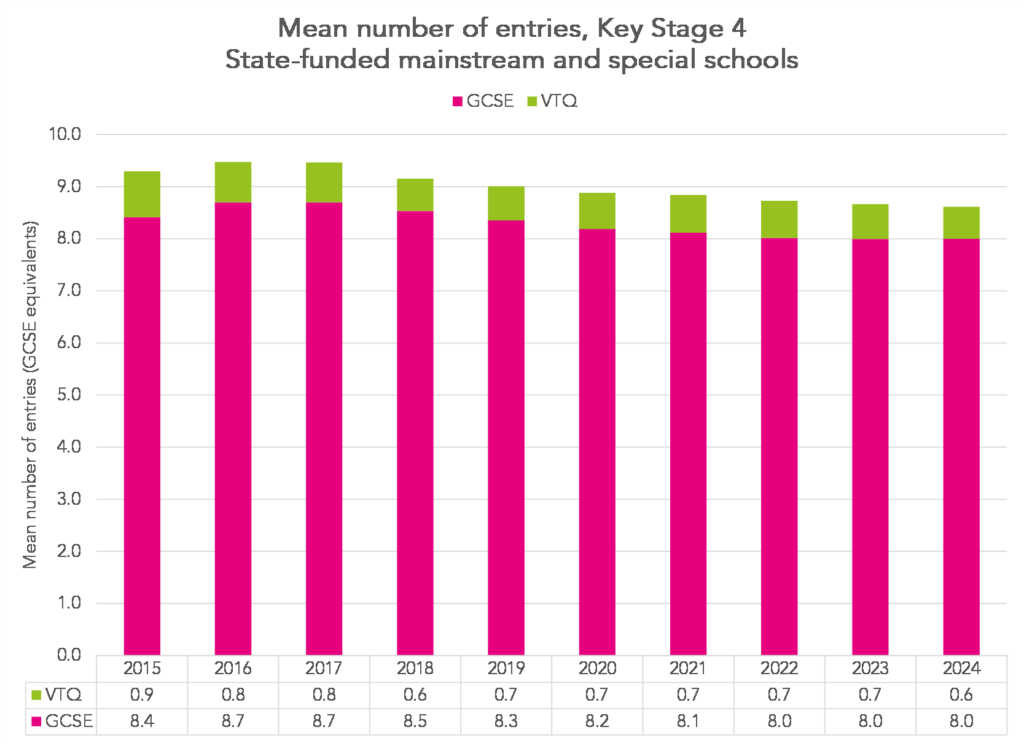
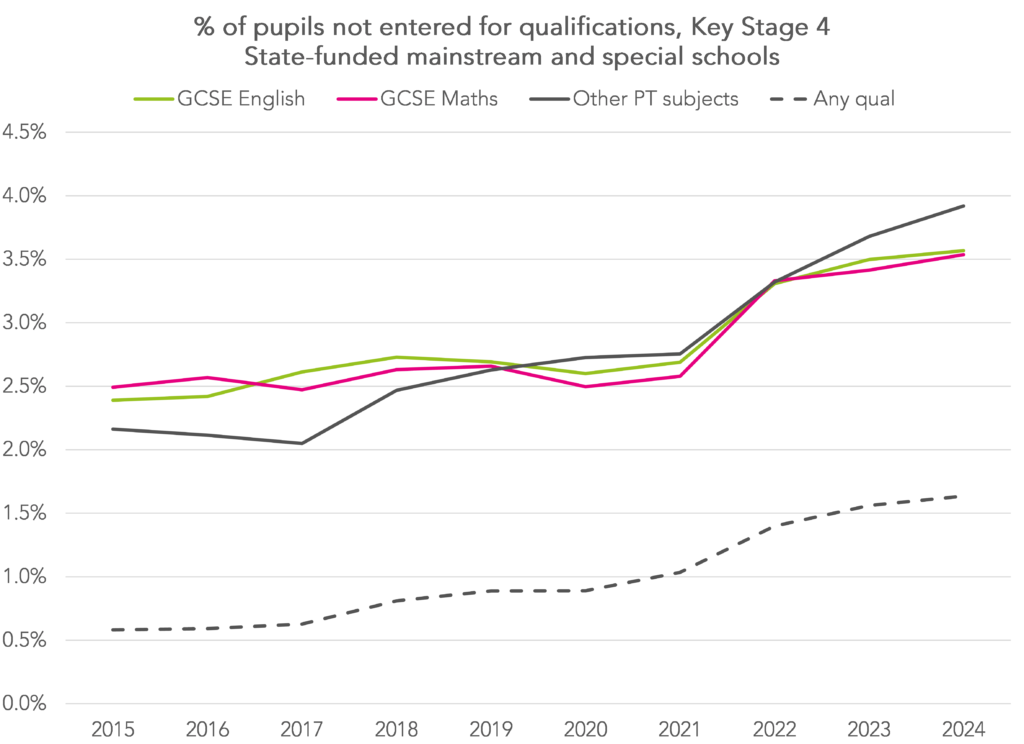
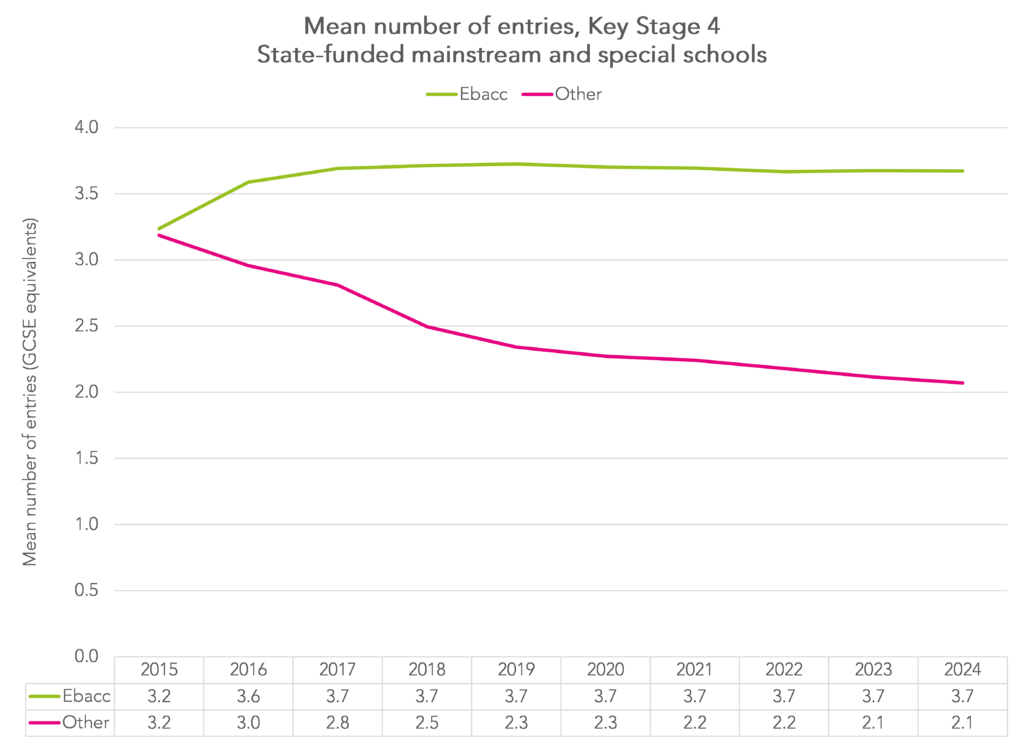
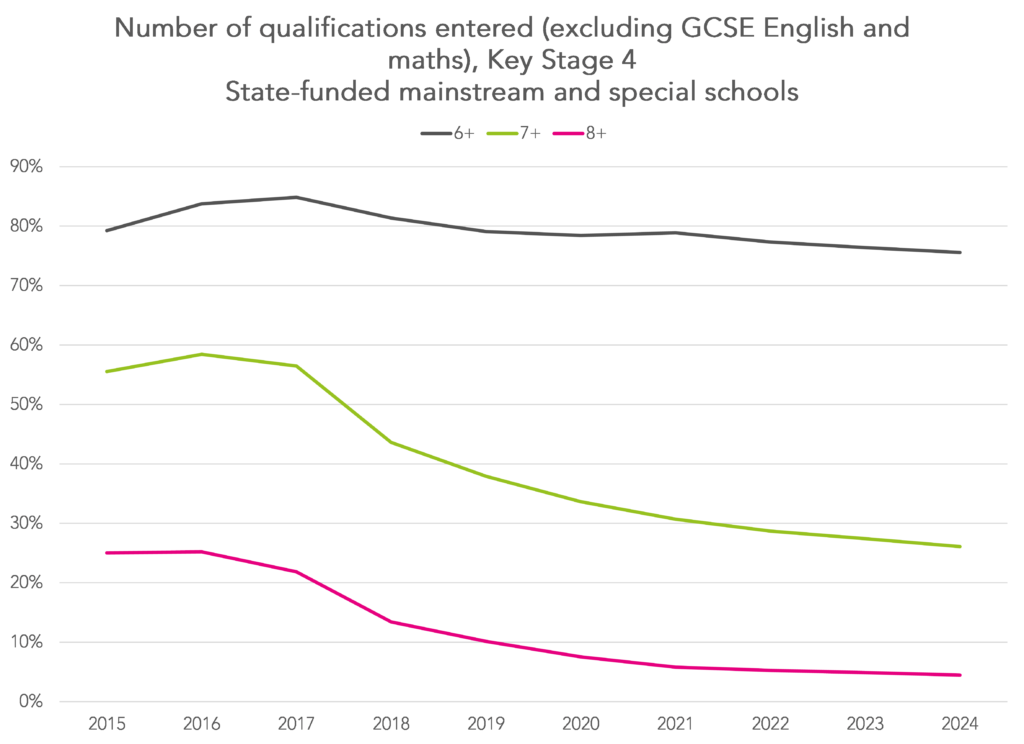


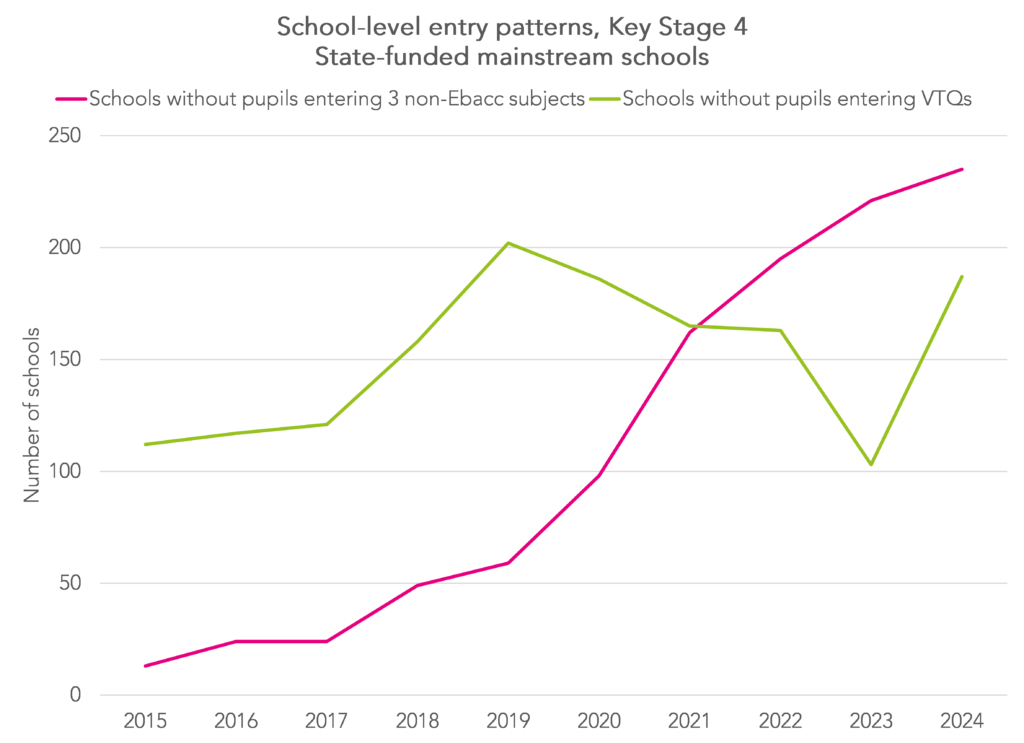


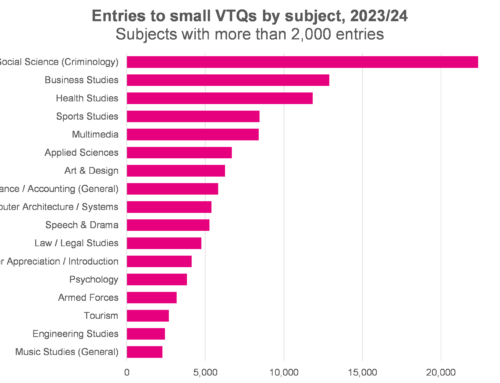
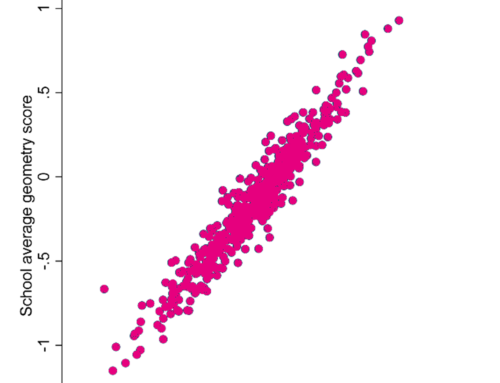

Leave A Comment